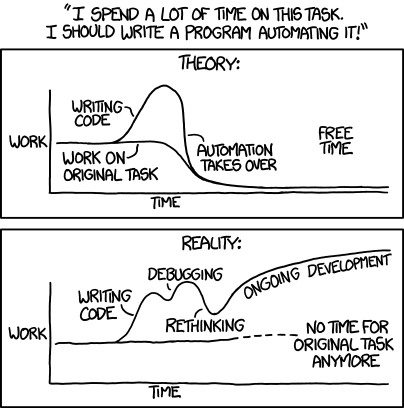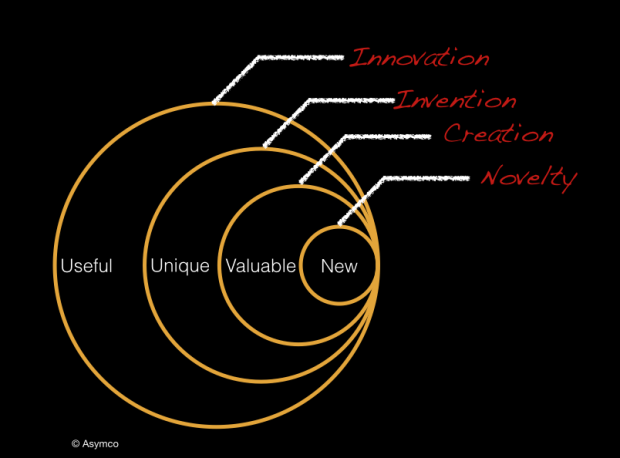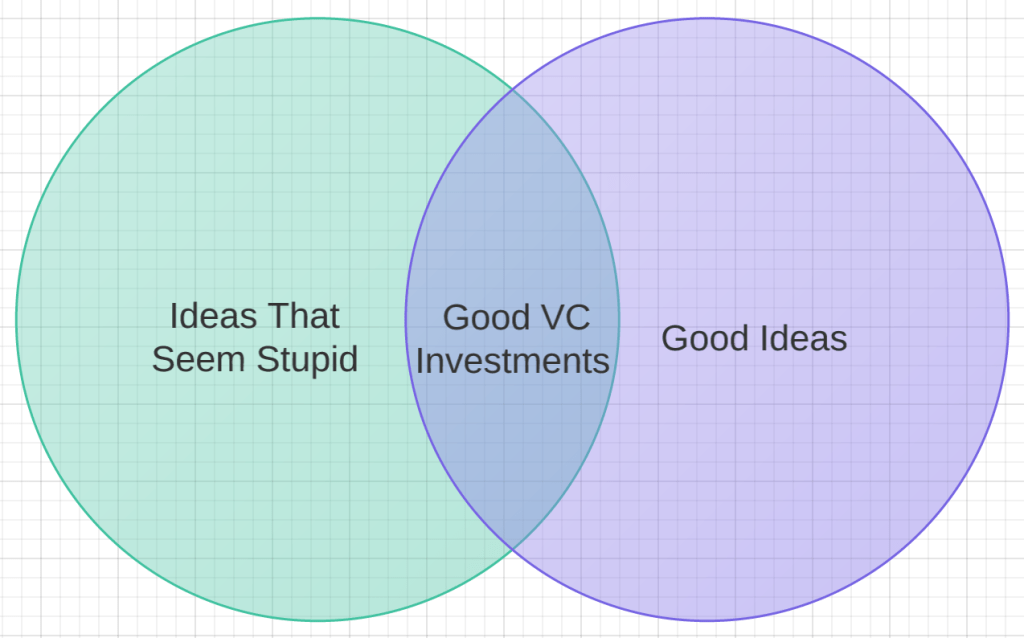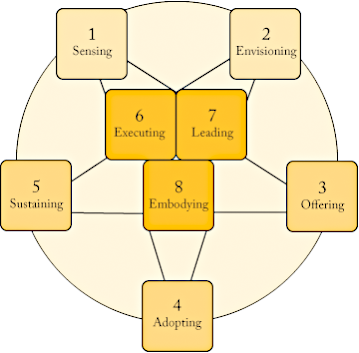Innovation is about finding a better way of doing something. Like many of the new development buzzwords (which many of them are over-used on many business documents), the concept of innovation originates from the world of business. It refers to the generation of new products through the process of creative entrepreneurship, putting it into production, and diffusing it more widely through increased sales. Innovation can be viewed as t he application of better solutions that meet new requirements, in-articulated needs, or existing market needs. This is accomplished through more effective products, processes, services, technologies, or ideas that are readily available to markets, governments and society. The term innovation can be defined as something original and, as a consequence, new, that “breaks into” the market or society.
Innoveracy: Misunderstanding Innovation article points out that there is a form of ignorance which seems to be universal: the inability to understand the concept and role of innovation. The way this is exhibited is in the misuse of the term and the inability to discern the difference between novelty, creation, invention and innovation. The result is a failure to understand the causes of success and failure in business and hence the conditions that lead to economic growth. The definition of innovation is easy to find but it seems to be hard to understand. Here is a simple taxonomy of related activities that put innovation in context:
- Novelty: Something new
- Creation: Something new and valuable
- Invention: Something new, having potential value through utility
- Innovation: Something new and uniquely useful
The taxonomy is illustrated with the following diagram.
The differences are also evident in the mechanisms that exist to protect the works: Novelties are usually not protectable, Creations are protected by copyright or trademark, Inventions can be protected for a limited time through patents (or kept secret) and Innovations can be protected through market competition but are not defensible through legal means.
Innovation is a lot of talked about nowdays as essential to businesses to do. Is innovation essential for development work? article tells that innovation has become central to the way development organisations go about their work. In November 2011, Bill Gates told the G20 that innovation was the key to development. Donors increasingly stress innovation as a key condition for funding, and many civil society organisations emphasise that innovation is central to the work they do.
Some innovation ideas are pretty simple, and some are much more complicated and even sound crazy when heard first. The is place for crazy sounding ideas: venture capitalists are gravely concerned that the tech startups they’re investing in just aren’t crazy enough:
Not all development problems require new solutions, sometimes you just need to use old things in a slightly new way. Development innovations may involve devising technology (such as a nanotech water treatment kit), creating a new approach (such as microfinance), finding a better way of delivering public services (such as one-stop egovernment service centres), identifying ways of working with communities (such as participation), or generating a management technique (such as organisation learning).
Theorists of innovation identify innovation itself as a brief moment of creativity, to be followed by the main routine work of producing and selling the innovation. When it comes to development, things are more complicated. Innovation needs to be viewed as tool, not master. Innovation is a process, not a one time event. Genuine innovation is valuable but rare.
There are many views on the innovation and innvation process. I try to collect together there some views I have found on-line. Hopefully they help you more than confuze. Managing complexity and reducing risk article has this drawing which I think pretty well describes innovation as done in product development:
8 essential practices of successful innovation from The Innovator’s Way shows essential practices in innovation process. Those practices are all integrated into a non-sequential, coherent whole and style in the person of the innovator.
In the IT work there is lots of work where a little thinking can be a source of innovation. Automating IT processes can be a huge time saver or it can fail depending on situation. XKCD comic strip Automation as illustrates this:

System integration is a critical element in project design article has an interesting project cost influence graphic. The recommendation is to involve a system integrator early in project design to help ensure high-quality projects that satisfy project requirements. Of course this article tries to market system integration services, but has also valid points to consider.
Core Contributor Loop (CTTDC) from Art Journal blog posting Blog Is The New Black tries to link inventing an idea to theory of entrepreneurship. It is essential to tune the engine by making improvements in product, marketing, code, design and operations.






5,158 Comments
Tomi Engdahl says:
https://futurism.com/the-byte/nasa-artemis-ii-launch-date
Tomi Engdahl says:
https://futurism.com/the-byte/researchers-quantum-energy-vacuum
Tomi Engdahl says:
Ultrafast Terahertz Tech Via Electronic Metadevices New devices control electric fields in a way that’s similar to how invisibility cloaks warp light, heat, and sound
https://spectrum.ieee.org/active-terahertz-metamaterials-devices
Tomi Engdahl says:
https://techcrunch.com/2023/03/02/figure-emerges-from-stealth-with-the-first-images-of-its-humanoid-robot/
Tomi Engdahl says:
”Nanolääkkeet ovat kuin pieniä robotteja, jotka kulkevat verisuonissamme hoitamassa elimistöä”
Nanolääkkeitä on tutkittu valtavasti 1990-luvulta lähtien, mutta markkinoille niitä on tullut kitsaasti. Professori Tapani Viitalalla haluaa korjata tätä epäsuhtaa. Yksi idea on lastata lääkeaineita kehon omiin kuljettimiin, vesikkeleihin.
https://www.helsinki.fi/fi/uutiset/laakekehitys/nanolaakkeet-ovat-kuin-pienia-robotteja-jotka-kulkevat-verisuonissamme-hoitamassa-elimistoa
Tomi Engdahl says:
Timeless Truths
When philosophers claim there is no time, just what are they denying?
https://www.templeton.org/news/timeless-truths
Tomi Engdahl says:
Arm Engineer Lauded for Concurrency Modeling Work
Exclusive Interview
https://www.eetimes.com/arm-engineer-lauded-for-concurrency-modelling-work/
Tomi Engdahl says:
Ällistyttävä saksalainen 1800-luvun yleisnero oivalsi hämmentävän monimutkaisia asioita, mutta unohdettiin pian maailmansodan jälkeen
Jukka Kemppinen5.3.202307:32HISTORIATIEDEYMPÄRISTÖ
Suurimmat henget ovat niitä, jotka ovat käsittäneet rajat keinotekoisiksi. Alexander von Humboldtin viisaus levisi kuin sieni. Hän tuli keksineeksi muun muassa tutkimusmatkailun ja tieteen popularisoinnin.
https://www.tekniikkatalous.fi/uutiset/allistyttava-saksalainen-1800-luvun-yleisnero-oivalsi-hammentavan-monimutkaisia-asioita-mutta-unohdettiin-pian-maailmansodan-jalkeen/bb9a88d7-0a2f-45b6-afbb-d33c009ceee7
Tomi Engdahl says:
Aalto-yliopiston tutkijat ovat onnistuneet ensimmäistä kertaa osoittamaan energian katoamisen atomejakin pienemmällä tasolla eli kvanttiturbulenssissa. Sitä tutkittiin yliopiston Kylmälaboratoriossa sijaitsevassa ainutlaatuisessa pyörivässä superpakastimessa eli kryostaatissa.
https://www.uusiteknologia.fi/2023/03/14/superpakastimella-kvanttiturbulenssin-jaljille/
Tomi Engdahl says:
https://hackaday.com/2023/03/11/electronic-bandage-speeds-wound-healing/
Tomi Engdahl says:
https://hackaday.com/2023/03/15/unconventional-computing-laboratory-grows-its-own-electronics/
Inside the lab that’s growing mushroom computers
The lead researcher says he is “planning to make a brain from mushrooms.”
https://www.popsci.com/technology/unconventional-computing-lab-mushroom/
Tomi Engdahl says:
https://www.electronicdesign.com/resources/industry-insights/media-gallery/21261695/electronic-design-celebrating-workers-in-science-and-engineering?utm_source=EG+ED+Connected+Solutions&utm_medium=email&utm_campaign=CPS230309184&o_eid=7211D2691390C9R&rdx.identpull=omeda|7211D2691390C9R&oly_enc_id=7211D2691390C9R
Tomi Engdahl says:
Bayesian search: A simple rule to find stuff you’ve lost
https://lm.facebook.com/l.php?u=https%3A%2F%2Fbigthink.com%2Fsmart-skills%2Fbayesian-search-find-stuff-lost%3Futm_medium%3DSocial%26utm_campaign%3Dechobox_freethink%26utm_source%3DFacebook%23Echobox%3D1679065447&h=AT2R4PqeeoxzT_zwMXYwgdpewVUOM21jYR6M-2yiGEseptU4b8C49QJOsuUCbREcGlQdJrTKcA7vSk53Kk-_vLB2GBDzNZhH3AZ8NIUdsYRfoJhAEgW3mra_Q-ibTanaCQ
Find your wallet or keys — or a nuclear submarine.
Tomi Engdahl says:
https://futurism.com/the-byte/bci-singularity-philosophers
Tomi Engdahl says:
Scientists may have found the secret to invisibility
We can see objects because light bounces off of them. Scientists say they’ve found a way to make light pass directly through objects – the secret to invisibility.
By Teresa Carey
April 24, 2021
https://www.freethink.com/science/invisibility
Tomi Engdahl says:
Tesla will use a magnetic engine to stop using rare earth elements
However, Elon Musk did not divulge information about the precise materials used.
https://interestingengineering.com/transportation/tesla-magnetic-engine
Tomi Engdahl says:
Inspired by butterflies, researcher invents new paint that has no pigments
It can not only keep us safe from the dangerous effects of synthetic paints but also keep buildings cooler.
https://interestingengineering.com/science/researcher-invents-paint-without-pigments
Tomi Engdahl says:
https://futurism.com/the-byte/famed-astronomer-bet-dog-multiverse
Tomi Engdahl says:
https://www.cnbc.com/2019/09/10/stanford-psychology-expert-biggest-parenting-mistake-is-not-teaching-kids-this-important-skill.html#Echobox=1678889124
Tomi Engdahl says:
The Electron Is Having a (Magnetic) Moment. It’s a Big Deal
A new experiment pulled off the most precise measurement of an electron’s self-generated magnetic field—and the universe’s subatomic model is at stake
https://www.wired.com/story/the-electron-is-having-a-magnetic-moment-its-a-big-deal/
Tomi Engdahl says:
Scientists discover superconducting material that could bring total revolution in energy and electronics
Previous similar study drew scepticism – but scientists say they have now proven that and more
https://www.independent.co.uk/tech/new-superconducting-material-energy-b2301058.html#Echobox=1678816092
Scientists have discovered a new material that could be set to change the entire world.
Researchers say they have created a superconducting material that works at both a temperature and a pressure low enough to actually use it in practical situations.
It reaches a breakthrough that scientists have been chasing for more than a century, in making a material that is able to transmit electricity without resistance, and pass magnetic fields around the material.
Its discovery could lead to power grids that are able to seamlessly transmit energy, saving up to 200 million megawatt hours that is currently lost to resistance. It could also contribute to nuclear fusion, a long-awaited process that could create unlimited power.
Other applications include high speed, hovering trains and new kinds of medical equipment, they suggest.
Recommended
Oscars 2023 – as it happened: Winners, snubs, Jimmy Kimmel jokes and Hugh Grant’s ‘obnoxious’ interview
Oscars 2023 – as it happened: Winners, snubs, Jimmy Kimmel jokes and Hugh Grant’s ‘obnoxious’ interview
Hugh Grant accused of ‘obnoxious’ behaviour to Ashley Graham during ‘disaster’ Oscars red carpet interview
Hugh Grant accused of ‘obnoxious’ behaviour to Ashley Graham during ‘disaster’ Oscars red carpet interview
‘She was snubbed’: Angela Bassett praised for ‘real’ reaction after losing Oscar to Jamie Lee Curtis
‘She was snubbed’: Angela Bassett praised for ‘real’ reaction after losing Oscar to Jamie Lee Curtis
A team led by the same scientist, Ranga Dias, previously reported the creation of two slightly less breakthrough but similarly superconducting materials in papers that were published in Nature and Physical Review Letters. The Nature paper was eventually retracted by the journal’s editors, amid questions over the scientists’ approach.
This time around, Professor Dias and his team say they took extra steps to avoid similar criticism. Scientists looked to validate that old paper with new data collected outside of a lab, with a team of scientists watching as it happened live, and undertook a similar process for the new research.
The new material is described in a paper, ‘Evidence of near-ambient superconductivity in a N-doped lutetium hydride’, published in Nature today.
Promoted stories
Tämän verran maksupäätteen pitäisi oikeasti maksaa
EXPERT MARKET
by TaboolaSponsored Links
The material has been nicknamed “reddmatter”, after its colour and as a nod to a material from Star Trek. It found that name during the process of creating it, when scientists found that it surprisingly switched to become a “very bright red” while it was being created.
Professor Dias and the team made the material by taking a rare earth metal named lutetium and mixed it with hydrogen and a small part of nitrogen. They were then left to react for two or three days, at high temperatures.
The compound came out a as a rich blue, according to the paper. But it was then pressed at very high pressure, when it turned from blue to pink as it reached superconductivity, and then again became a rich red at its non-superconducting metallic state.
To work, the material still requires being heated to 20.5 degrees Celsius and compressed to about 145,000 psi. But that is vastly less intense than other, similar materials – including those announced in 2020 by Professor Dias that brought excitement and scepticism from scientists.
And it is practical enough that the scientists involved in the paper say that it will mark a new era for the practical use of superconducting materials.
Recommended
Robots may improve mental health at work if they look right, scientists say
Floating solar panels could power a third of the world – study
The UK is considering fully banning TikTok
“A pathway to superconducting consumer electronics, energy transfer lines, transportation, and significant improvements of magnetic confinement for fusion are now a reality,” Professor Dias said in a statement. “We believe we are now at the modern superconducting era.”
Those practical applications might include using the material to accelerate the development of “tokamak machines” that are being developed to achieve nuclear fusion.
Tomi Engdahl says:
Researchers Say They’ve Come Up With a Blueprint for Creating a Wormhole in a Lab
Mind blown.
https://futurism.com/lab-wormholes-blueprint
Tomi Engdahl says:
Breakthrough discovery in materials science challenges current understanding of photoemission
https://phys.org/news/2023-03-breakthrough-discovery-materials-science-current.html
Tomi Engdahl says:
Scientists Warn Giant Asteroid Is Actually Swarm, Nearly Impossible to Destroy
We might have to rethink our asteroid defense strategy.
Tomi Engdahl says:
https://futurism.com/the-byte/scientists-make-delicious-lab-grown-fat
Tomi Engdahl says:
How Quantum Physicists ‘Flipped Time’ (and Didn’t)
In 2022, two teams made photons act as if time were simultaneously flowing in both directions, which could point to a way to boost quantum devices.
https://www.quantamagazine.org/how-quantum-physicists-flipped-time-and-how-they-didnt-20230127/
Tomi Engdahl says:
Scientists Warn Giant Asteroid Is Actually Swarm, Nearly Impossible to Destroy
We might have to rethink our asteroid defense strategy.
https://futurism.com/giant-asteroid-actually-swarm-particles-impossible-destroy
Tomi Engdahl says:
Europe needs metals. Bacteria can get it from waste.
https://researchinestonia.eu/2023/03/15/europe-needs-metals-bacteria-can-get-it-from-waste/
Estonian scientists are using microorganisms to extract metals from toxic waste.
Your smartphone is precious, but more so than you might expect. It has gold and silver hidden in its circuit boards in addition to many other important metals like cobalt, lithium and copper.
You could collect about a gram of gold from 35 smartphones. The quality is the same as that dug from the ground. Still, humans throw away most of their used electronic devices and reach for a new one without thinking about it
Tomi Engdahl says:
Artificial Leaf Draws Power From Wind and Raindrops A single drop can produce 40 volts of electricity
https://spectrum.ieee.org/artificial-leaf-energy-harvesting
Tomi Engdahl says:
https://www.iflscience.com/fold-piece-paper-half-103-times-and-it-will-be-thick-universe-25108
Tomi Engdahl says:
Ydinvoimalan säteily havaittiin 240 kilometrin päästä suoraan peruskallion läpi
Tuomas Kangasniemi17.3.202307:49TIEDEYDINVOIMA
Mittaus tehtiin Kanadassa. Tällaista havaintoa ei ole koskaan ennen tehty.
https://www.tekniikkatalous.fi/uutiset/ydinvoimalan-sateily-havaittiin-240kilometrin-paasta-suoraan-peruskallion-lapi/6607c404-3b53-4f27-a8b6-1cbff7ea086a
Ydinvoimalan neutriinosäteily on onnistuttu mittaamaan 240 kilometrin päästä suoraan peruskallion läpi kanadalais-yhdysvaltalaisessa tutkimuksessa, uutisoivat New Scientist ja APS Physics. Tällaista havaintoa ei ole koskaan ennen tehty, löydön tehneet tutkijat kirjoittavat tieteellisen artikkelinsa tiivistelmässä.
Tomi Engdahl says:
Antimatter neutrinos detected from a nuclear reactor 240 km away
https://www.newscientist.com/article/2362490-antimatter-neutrinos-detected-from-a-nuclear-reactor-240-km-away/
A water-based detector has been used to spot antineutrinos from nuclear reactions hundreds of kilometres away. It could be used to monitor distant nuclear activities
Antimatter neutrinos created by a nuclear reactor were picked up by a detector located 240 kilometres away. The approach could be used to monitor nuclear activity from afar.
The universe is full of neutrinos and their antimatter counterparts called antineutrinos. They are commonly produced inside the sun and in nuclear reactors, but detecting them is difficult because they typically move through matter without affecting it. Despite this, Josh Klein at the University of Pennsylvania and his colleagues managed to record …
Tomi Engdahl says:
At light speed, Einstein’s equations break down and nothing makes sense
Everything everywhere all at once.
https://bigthink.com/hard-science/photons-light-time/
KEY TAKEAWAYS
The relationship of light to time is nonintuitive. Mathematical limits allow us to figure out what happens to photons at the exact speed of light where Einstein’s equations break down. At the speed of light, clocks stop — and the Universe is shrunk to zero size.
Tomi Engdahl says:
‘Red matter’ superconductor may not be a wonder material after all
A material called red matter, after the colour change it undergoes when subjected to pressure, was hailed as a potential room temperature superconductor, but now other researchers are finding they can’t replicate the results
https://www.newscientist.com/article/2364955-red-matter-superconductor-may-not-be-a-wonder-material-after-all/
Tomi Engdahl says:
Home – Japanese Scientists Were Able To Create Baby Mice From Two Fathers
Japanese Scientists Were Able To Create Baby Mice From Two Fathers
https://japaninsides.com/japanese-scientists-were-able-to-create-baby-mice/
Scientists have made eggs from male mice’s cells for the first time, leading to the birth of 7 mice with two fathers, according to papers published on Wednesday that scientists described as “revolutionary.”
Home – Japanese Scientists Were Able To Create Baby Mice From Two Fathers
Japanese Scientists Were Able To Create Baby Mice From Two Fathers
Scientists have made eggs from male mice’s cells for the first time, leading to the birth of 7 mice with two fathers, according to papers published on Wednesday that scientists described as “revolutionary.”
The method developed in the proof-of-concept study is far from being able to be used on humans. It has many obstacles to overcome, such as an extremely low rate of success in the field, adaptability concerns, and numerous ethical issues.
The breakthrough also opens up many possibilities for reproduction, such that gay couples or even a man who is single may have a biological child without the need for an egg from a female.
The study, which was released through the journal Nature, was conducted by a group of scientists in Japan under the direction of Katsuhiko Hayashi, a developmental biologist from Katsuhiko Hayashi of the Osaka and Kyushu universities.
Hayashi and his colleagues have previously discovered a method to extract the skin cells of a female mouse and turn them into eggs, which could then be used to create healthy babies.
Tomi Engdahl says:
https://scitechdaily.com/time-reflection-of-electromagnetic-waves-demonstrated-in-a-groundbreaking-experiment/
Tomi Engdahl says:
https://futurism.com/the-byte/startup-revive-extinct-dodo-using-complete-genome
Tomi Engdahl says:
https://futurism.com/the-byte/scientist-hack-reality-simulation
Tomi Engdahl says:
How Big Is a Proton? Neutrinos Weigh In
A first-of-its-kind probe brings physicists one step closer to solving the proton radius puzzle
https://www.scientificamerican.com/article/how-big-is-a-proton-neutrinos-weigh-in/
Tomi Engdahl says:
Home – Overcome Laziness in One Minute by Using This Japanese Technique
Overcome Laziness in One Minute by Using This Japanese Technique
Being lazy – we are all guilty of it. I am sure many of us have given up on certain goals, no matter how big or small, or have failed to achieve things just by putting them off for tomorrow, or next week..or never.
https://japaninsides.com/overcome-laziness-in-one-minute-by-using-this-japanese-technique/
Tomi Engdahl says:
A Computer Built With Dominos
https://www.youtube.com/watch?v=w6E7aQnA4Ws
Tomi Engdahl says:
https://hackaday.com/2023/03/15/retrotechtacular-military-graphics-in-the-1960s/
Tomi Engdahl says:
Another Room-Temperature Superconductivity Claim And Questions Of Scientific Integrity
https://hackaday.com/2023/03/20/another-room-temperature-superconductivity-claim-and-questions-of-scientific-integrity/
In early March of 2023, a paper was published in Nature, with the researchers claiming that they had observed superconductivity at room temperature in a conductive alloy, at near-ambient pressure. While normally this would be cause for excitement, what mars this occasion is that this is not the first time that such claims have been made by these same researchers. Last year their previous paper in Nature on the topic was retracted after numerous issues were raised by other researchers regarding their data and the interpretation of this that led them to conclude that they had observed superconductivity.
According to an interview with one of the lead authors at the University of Rochester – Ranga Dias – the retracted paper has since been revised to incorporate the received feedback, with the research team purportedly having invited colleagues to vet their data and experimental setup. Of note, the newly released paper reports improvements over the previous results by requiring even lower pressures.
Depending on one’s perspective, this may either seem incredibly suspicious, or merely a sign that the scientific peer review system is working as it should. For the lay person this does however make it rather hard to answer the simple question of whether room-temperature superconductors are right around the corner. What does this effectively mean?
Tomi Engdahl says:
https://hackaday.com/2023/03/22/combining-acoustic-bioprinting-with-raman-spectroscopy-for-high-throughput-identification-of-bacteria/
Tomi Engdahl says:
Who Needs Gasoline When You’ve Got Sodium?
https://hackaday.com/2023/03/23/who-needs-gasoline-when-youve-got-sodium/
YouTuber and serial debunker [Thunderf00t] was thinking about the use of sodium to counteract global warming. The theory is that sodium can be used as a fuel when combusted with air, producing a cloud of sodium hydroxide which apparently can have a cooling effect if enough of it is kicking around the upper atmosphere. The idea is to either use sodium directly as a fuel, or as a fuel additive, to increase the aerosol content of vehicle emissions and maybe reduce their impact a little.
One slight complication to using sodium as a fuel is that it’s solid at room temperature, so it would need to be either delivered as pellets or in liquid form. That’s not a major hurdle as the melting point is a smidge below 100 degrees Celsius and well within the operating region of an internal combustion engine, but you can imagine the impact of metal solidifying in your fuel system.
Can Fuel Injectors burn SODIUM??
https://www.youtube.com/watch?v=-s0w0RKny64
Tomi Engdahl says:
https://hackaday.com/2023/03/23/grow-your-own-brain-electrodes/
Tomi Engdahl says:
Enamel is tough enough to resist dents, yet elastic enough not to crack during decades of jaw smashing.
It’s so incredible that scientists haven’t created a substitute that can match it—until last year. #ScienceMagArchives
New artificial enamel is harder and more durable than the real thing
https://www.science.org/content/article/new-artificial-enamel-harder-and-more-durable-real-thing?utm_campaign=SciMag&utm_source=Facebook&utm_medium=ownedSocial
Novel material mimics enamel’s complex structure with stronger components
Tomi Engdahl says:
Nerokas keksijä teki kaksi tieteen historian suurinta virhettä
https://tieku.fi/teknologia/nerokas-keksija-teki-kaksi-tieteen-historian-suurinta-virhetta
Kahta insinööri Thomas Midgley nuoremman noin sata vuotta sitten tekemää keksintöä voidaan jälkiviisaasti pitää onnettomina.
Tomi Engdahl says:
Tämä karmiva keksintö kykenee livahtamaan oven alta sisään – Yhdysvalloissa keksittiin toukkabotti
Yhdysvaltalaiset tutkijat sanovat toukkabotin olevan kehitettäväksi palo- ja pelastustoimiin.
https://www.iltalehti.fi/iltvuutiset/a/fc1290e7-d3a2-42ca-afc5-4c449b5223f7
Pohjois-Carolinassa, Yhdysvalloissa tutkijatiimi kehitti toukkabotin, jota käyttäjät pystyivät ohjaamaan erittäin matalan raon alta. Inspiraatio kehittämiseen haettiin toukkien liikkumistavasta.
– Olemme saaneet inspiraatiota toukkien biomekaniikasta. Jäljittelimme niiden paikallista kaarevuutta. Käyttämällä nanolankalämmittimiä ohjaamaamme toukkabotteja jäljentämään samankaltaista kaarevuutta ja liikettä, sanoo mekaniikka- ja ilmailutekniikan professori Andrew A. Adams.
Toukkabotti koostuu kahdesta polymeerikerroksesta, jotka reagoivat eri tavalla altistuessaan lämmölle. Pohjakerros kutistuu tai supistuu altistuessaan lämmölle, kun päällyskerros altistuessaan laajenee. Laajenevaan polymeerikerrokseen on upotettu hopeisten nanolankojen kuvio. Kuvio sisältää useita johtopisteitä, joihin tutkijat ohjaavat sähkövirtaa.
Tutkijat voivat hallita, mitkä nanolankakuvion osat kuumenevat kohdistamalla sähkövirtaa eri johtopisteisiin. Näin he voivat ohjata lämmön määrää käyttämällä enemmän tai vähemmän virtaa.
Tomi Engdahl says:
Kuusta löytyi lasihelmiä, joiden sisällä on valtavasti vettä
Tutkijoiden mukaan kuun pinnalla olevissa lasihelmissä voi olla jopa satoja biljoonia kiloja vettä.
https://www.iltalehti.fi/ulkomaat/a/89431cd3-bfe2-4ddf-801b-d3ab76dd734b
Kansainvälinen tutkimusryhmä on löytänyt vettä kuun pinnalta tuoduista pienistä lasihelmistä, kertoo uutistoimisto AFP.
Vesi havaittiin kiinalaisen luotaimen tuomista näytteistä. Kaikkiaan tutkijat analysoivat 117 lasihelmeä. Lasihelmien kerrotaan syntyneen, kun hyvin pienet meteoriitit ovat törmänneet kuun pintaan.
Kuussa on tiedetty olevan vettä, mutta lasihelmitutkimus osoittaa, että ainakin kiertolaisen pinnalla vesi on todennäköisesti keskittynyt suurelta osin juuri niihin.
Tutkijat arvioivat, että helmissä voi olla kaikkiaan jopa kolmesataa biljoonaa kiloa vettä.
Veden uskotaan olevan saatavissa käyttöön varsin helposti. Tutkijoiden mukaan veden vapauttamiseen tarvitaan vain noin sadan asteen lämpötila.
A solar wind-derived water reservoir on the Moon hosted by impact glass beads
https://www.nature.com/articles/s41561-023-01159-6
The past two decades of lunar exploration have seen the detection of substantial quantities of water on the Moon’s surface. It has been proposed that a hydrated layer exists at depth in lunar soils, buffering a water cycle on the Moon globally. However, a reservoir has yet to be identified for this hydrated layer. Here we report the abundance, hydrogen isotope composition and core-to-rim variations of water measured in impact glass beads extracted from lunar soils returned by the Chang’e-5 mission. The impact glass beads preserve hydration signatures and display water abundance profiles consistent with the inward diffusion of solar wind-derived water. Diffusion modelling estimates diffusion timescales of less than 15 years at a temperature of 360 K. Such short diffusion timescales suggest an efficient water recharge mechanism that could sustain the lunar surface water cycle. We estimate that the amount of water hosted by impact glass beads in lunar soils may reach up to 2.7 × 1014 kg. Our direct measurements of this surface reservoir of lunar water show that impact glass beads can store substantial quantities of solar wind-derived water on the Moon and suggest that impact glass may be water reservoirs on other airless bodies.